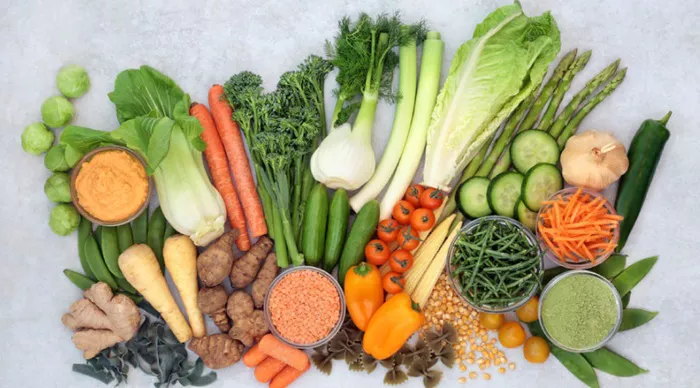In recent years, the focus on plant-based diets has surged, leading many to explore alternative sources of protein beyond traditional animal products. While meat, dairy, and eggs are often lauded as the primary sources of protein, a variety of vegetables also pack a significant protein punch. This article delves into the world of high-protein vegetables, highlighting their nutritional benefits, culinary versatility, and how they can fit into a balanced diet.
Protein in Vegetables
Protein is an essential macronutrient that plays a crucial role in building and repairing tissues, producing enzymes and hormones, and supporting overall bodily functions. While animal proteins are complete proteins—containing all nine essential amino acids—many plant proteins are considered incomplete. However, by combining different plant sources, one can achieve a complete amino acid profile. Vegetables contribute to this protein intake while providing a wealth of vitamins, minerals, and fiber.
High-Protein Vegetables
1. Green Peas
Protein Content: Approximately 8 grams per cup (cooked).
Nutritional Benefits: Green peas are not only rich in protein but also high in fiber, vitamins A, C, K, and several B vitamins. They contain antioxidants that may help reduce inflammation.
Culinary Uses: Peas can be added to salads, soups, and stir-fries or served as a side dish. They can also be blended into smoothies for an extra nutrient boost.
2. Spinach
Protein Content: About 5.3 grams per cup (cooked).
Nutritional Benefits: Spinach is packed with iron, calcium, magnesium, and vitamins A and K. It is known for its antioxidant properties and potential health benefits for bone health.
Culinary Uses: Spinach can be used in salads (raw), smoothies (raw), omelets (cooked), or as a cooked side dish. It can also be incorporated into pasta dishes and casseroles.
3. Broccoli
Protein Content: Roughly 2.8 grams per cup (cooked).
Nutritional Benefits: Broccoli is a nutrient-dense vegetable rich in fiber, vitamins C and K, folate, and various antioxidants. It has been linked to improved heart health and cancer prevention.
Culinary Uses: Broccoli can be steamed, roasted, or stir-fried. It makes an excellent addition to salads or can be blended into soups for added creaminess.
4. Brussels Sprouts
Protein Content: About 3 grams per cup (cooked).
Nutritional Benefits: These mini cabbages are high in fiber and vitamins C and K. They contain glucosinolates that may have cancer-fighting properties.
Culinary Uses: Brussels sprouts can be roasted with olive oil for a crispy texture or sautéed with garlic for flavor. They can also be shredded into salads.
5. Asparagus
Protein Content: Approximately 2.9 grams per cup (cooked).
Nutritional Benefits: Asparagus is low in calories but rich in vitamins A, C, E, K, and folate. It contains antioxidants that promote overall health.
Culinary Uses: Asparagus can be grilled, steamed, or roasted as a side dish or added to pasta dishes and salads.
See Also: How Do Animal And Plant-Based Milks Affect Gut Health?
6. Corn
Protein Content: About 4 grams per ear (cooked).
Nutritional Benefits: Corn is rich in fiber and provides essential nutrients such as B vitamins and magnesium.
Culinary Uses: Corn can be enjoyed on the cob or added to salads, salsas, soups, and casseroles.
7. Mushrooms
Protein Content: Roughly 3 grams per cup (cooked).
Nutritional Benefits: Mushrooms are low in calories but high in selenium, potassium, and various B vitamins. They have anti-inflammatory properties.
Culinary Uses: Mushrooms can be sautéed as a side dish or added to soups, stir-fries, pizzas, and pasta dishes.
8. Sweet Potatoes
Protein Content: Approximately 2 grams per medium sweet potato.
Nutritional Benefits: Sweet potatoes are rich in beta-carotene (vitamin A), fiber, vitamin C, and potassium.
Culinary Uses: They can be baked, mashed, or used in soups and stews.
9. Cauliflower
Protein Content: About 2 grams per cup (cooked).
Nutritional Benefits: Cauliflower is high in fiber and B vitamins while being low in calories.
Culinary Uses: Cauliflower can be roasted or mashed as a low-carb alternative to potatoes or used as rice.
10. Mustard Greens
Protein Content: Approximately 3 grams per cup (cooked).
Nutritional Benefits: Mustard greens are high in vitamins A, C, K, calcium, and antioxidants.
Culinary Uses: They can be sautéed with garlic or added to soups for flavor.
11. Collard Greens
Protein Content: About 3 grams per cup (cooked).
Nutritional Benefits: Collard greens are rich in vitamins A, C, K, calcium, iron, and folate.
Culinary Uses: Often used in Southern cooking; they can be braised or added to stews.
12. Artichokes
Protein Content: Roughly 4 grams per medium artichoke.
Nutritional Benefits: Artichokes are high in fiber and antioxidants while being low in calories.
Culinary Uses: They can be steamed or grilled and served with dips or incorporated into salads.
13. Watercress
Protein Content: About 0.8 grams per cup (raw).
Nutritional Benefits: Watercress is rich in vitamins A and C while providing calcium.
Culinary Uses: It can be used fresh in salads or as a garnish for soups.
14. Lima Beans
Protein Content: Approximately 3 grams per half-cup (cooked).
Nutritional Benefits: Lima beans provide fiber along with essential nutrients like potassium and iron.
Culinary Uses: They can be added to stews or served as a side dish.
15. Edamame
Protein Content: About 17 grams per cup (cooked).
Nutritional Benefits: Edamame is high in protein and fiber while providing iron and calcium.
Culinary Uses: Often served as an appetizer; they can also be added to salads or grain bowls.
16. Kale
Protein Content: Approximately 2-3 grams per cup (cooked).
Nutritional Benefits: Kale is loaded with vitamins A, C, K along with antioxidants.
Culinary Uses: It can be used raw in salads or cooked into soups.
17. Peppers
Protein Content: About 1 gram per medium pepper.
Nutritional Benefits: Peppers are rich in vitamin C while being low-calorie.
Culinary Uses: They add flavor to stir-fries or salads.
18. Zucchini
Protein Content: Approximately 1 gram per medium zucchini.
Nutritional Benefits: Zucchini is low-calorie while providing vitamin C.
Culinary Uses: Can be spiralized into noodles or grilled.
19. Beets
Protein Content: Roughly 2 grams per cup (cooked).
Nutritional Benefits: Beets offer antioxidants along with folate.
Culinary Uses: Can be roasted or added to salads.
20. Squash
Protein Content: About 1 gram per cup (cooked).
Nutritional Benefits: Squash provides vitamin A along with fiber.
Culinary Uses: Can be roasted or mashed as a side dish.
Incorporating High-Protein Vegetables into Your Diet
To maximize the benefits of high-protein vegetables:
Combine different vegetables to create colorful salads that not only provide protein but also essential nutrients.
Use these vegetables as the base of your meals rather than relying solely on grains or starches.
Experiment with cooking methods such as roasting or grilling to enhance flavors while retaining nutritional value.
Pair high-protein vegetables with other protein sources like legumes or whole grains for balanced meals.
Conclusion
High-protein vegetables offer an excellent way to enhance your diet without relying solely on animal products for protein intake. By incorporating these nutrient-dense foods into your meals regularly—whether through salads, stir-fries, soups—or simply enjoying them roasted—you’ll not only boost your protein consumption but also enjoy the myriad health benefits they provide. Embracing these vegetables allows for greater dietary diversity while supporting overall health goals through improved nutrition choices that align with modern dietary preferences toward plant-based eating habits.
Related Topics
What Is The Source Of Protein In Premier Protein Shakes?


































